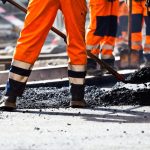Pressure regulator valves are a form of control valve. Their intent is to take the incoming pressure of a fluid and decrease it to the specified value when it leaves. In other words, a pressure regulator regulates the pressure of the substance it controls. This can be a gas or a liquid. Although it comes in different types, it generally consists of 3 common elements:
- The restrictive or reducing element
- The sensing or loading element
- The measuring element
All interact together to ensure the flow through the device matches the demand for it. Common materials for construction include aluminum, brass, plastic and stainless steel. The material of the valves and their components must be compatible with the application.
Basic Types of Pressure Regulator Valves
Like many other types of valves, these come in different types to address diverse applications. Among the basic kinds are:
- Single-Stage Regulator: Perfect for applications that require small or minimal amounts of reduction in pressure
- Two-Stage (Dual Stage) Regulator: Where the flow rate features large variations or may possess decreasing or significant fluctuations in the inlet pressure, this is the more appropriate option
- Three-Stage Regulator: The pressure stability provided by a dual stage regulator is also available in this type. However, the capability to handle extensively greater inlet pressure by this model is the distinguishing feature between these two types.
Select the pressure regulator valve with care, basing it on whether the need is to control large or minuscule amounts of inlet pressure.
Pressure Regulator Valves
Homes, commercial businesses, and industries all have pressure regulators operating in some capacity or other. If you have a propane barbecue, it will feature a pressure regulator valve to regulate the flow of gas. In dentist offices and medical centers, these valves regulate oxygen and anesthesia gases. In fact, pressure regulator valves are an essential tool in many of our world’s devices.








